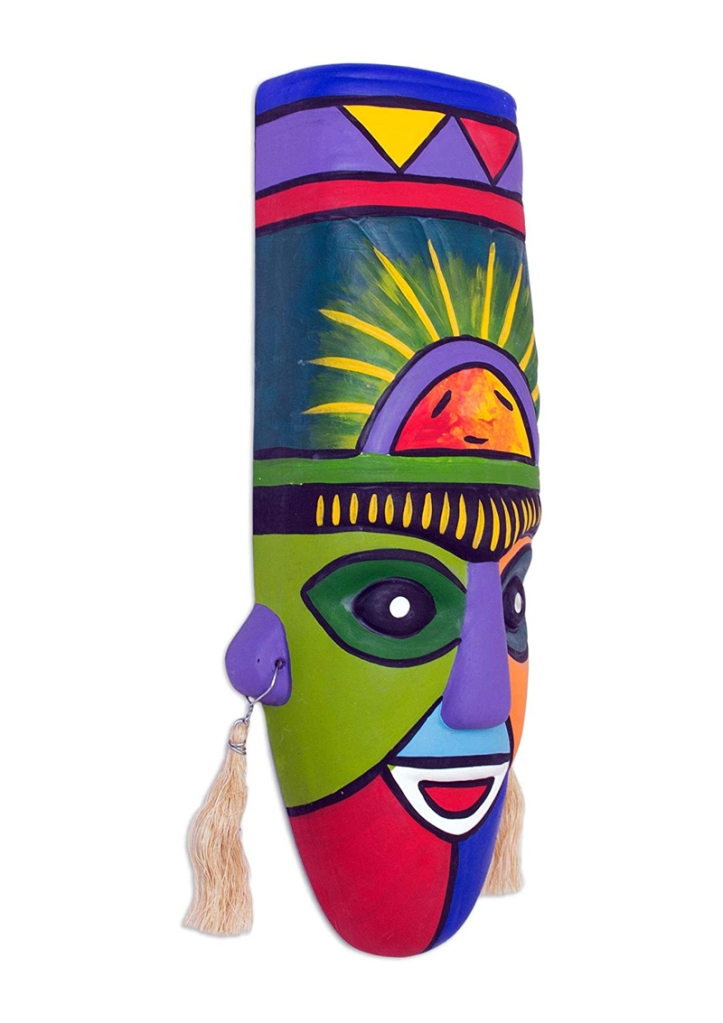Inca Chief Priest’s Ceramic Mask Statue
The creation of this Inca Chief Priest’s Ceramic Mask Statue follows a long tradition of ceramic craftsmanship, using techniques that have been preserved for generations. The natural quality of the wood in this piece is showcased by the care put into carving it. The care taken to paint this piece shows in the details of the design. In a splash of blazing color, the visage of an Inca Chief Priest springs to life. This mask fervently mixes creative geometric forms with bright South American images generating an exciting feeling of movement and activity. Bringing into the home a touch of ancient Peruvian sacredness, this mask makes an intriguing wall adornment. The Sapa Inca was conceptualized as divine and was effectively head of the state religion. The Willaq Umu (or Chief Priest) was second to the emperor. Local religious traditions continued and in some cases such as the Oracle at Pachacamac on the Peruvian coast, were officially venerated. Following Pachacuti, the Sapa Inca claimed descent from Inti, who placed a high value on imperial blood, by the end of the empire, it was common to incestuously wed brother and sister. He was “Son of the Sun“, and his people the intip churin, or “Children of the Sun“, and both his right to rule and mission to conquer derived from his holy ancestor.
The Sapa Inca also presided over ideologically important festivals, notably during the Inti Raymi, or “Sunfest” attended by soldiers, mummified rulers, nobles, clerics and the general population of Cusco beginning on the June Solstice and culminating 9 days later with the ritual Breaking of the Earth using a foot plow by the Inca. Moreover, Cusco was considered cosmologically central, loaded as it was with huacas and radiating ceque lines as the geographic center of the Four-Quarters. Inca Garcilaso de la Vega called it “the Navel of the Universe“. Scholarly research demonstrates that Incan belief systems were integrated with their view of the Cosmos, especially in regard to the way that the Inca observed the motions of the Milky Way and the Solar System as seen from Cusco, the Inca capital whose name meant the center of the earth. From this perspective, their stories depict the movements of constellations, planets, and planetary formations, which are all connected to their agricultural cycles. This was especially important for the Inca, as they relied on cyclical agricultural seasons, which were not only connected to annual cycles, but to a much wider cycle of time (every 800 years at a time). This way of keeping time was deployed in order to ensure the cultural transmission of key information, in spite of regime change or social catastrophes. Sapa Inca Ceramic Mask Statue measures: 11.5 inches / 29 cm x 4.7 inches / 12 cm x 2.6 inches / 6.5 cm.
Inca Chief Priest’s Ceramic Mask Statue on Amazon.
Inca Chief Priest’s Ceramic Mask Statue on eBay.




You must be logged in to post a comment.